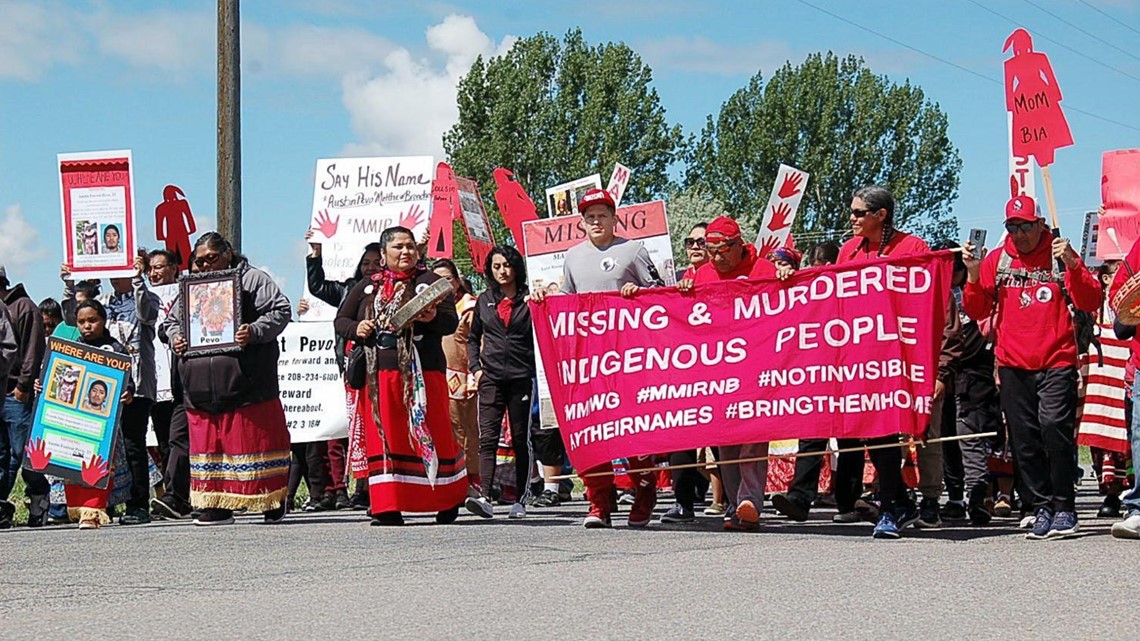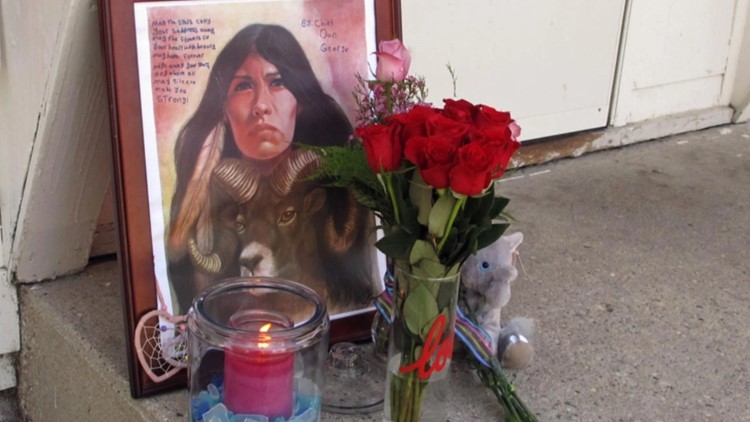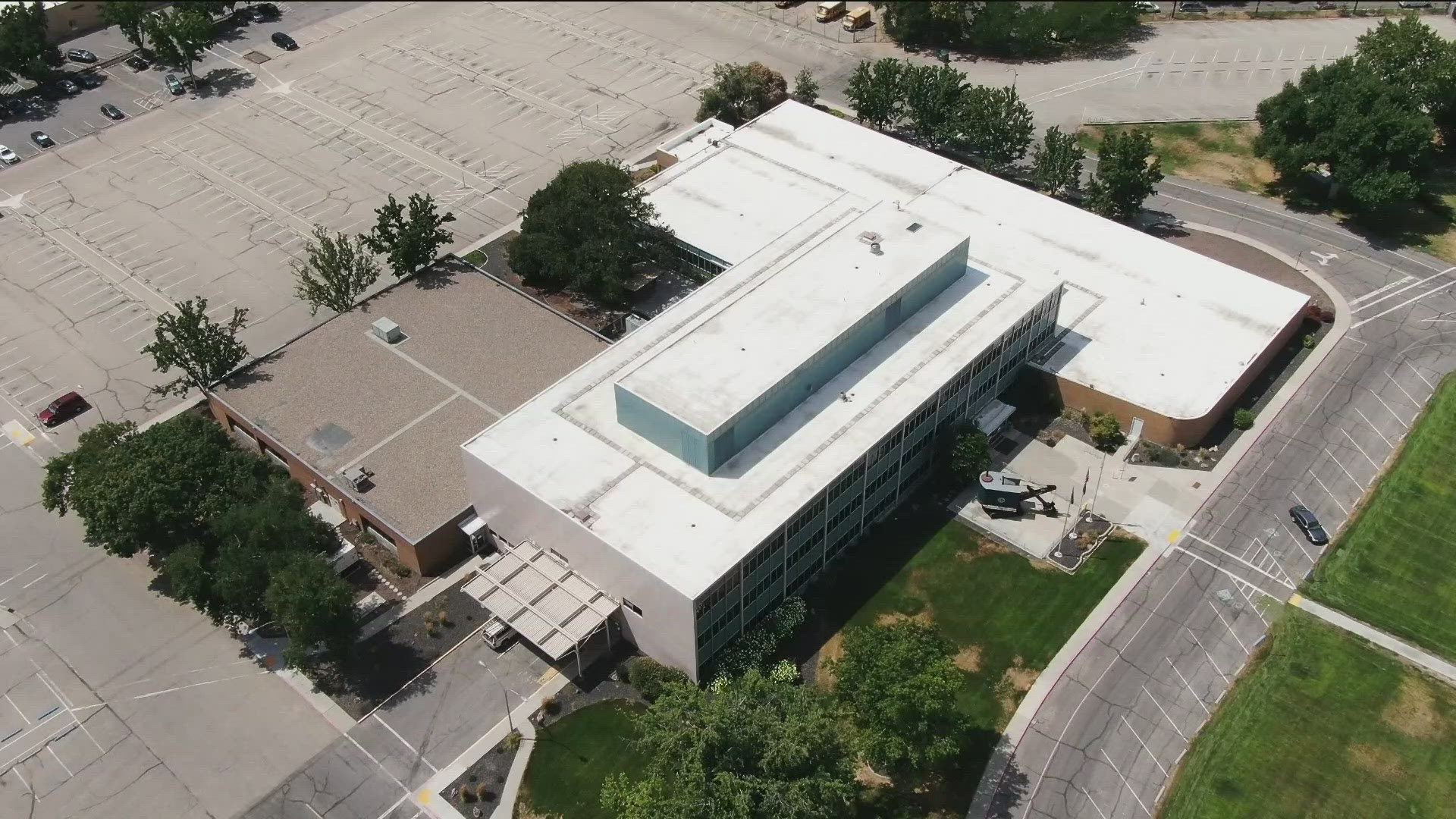BOISE, Idaho — This article originally appeared in the Idaho Press.
Editor's note: The Idaho Press is rolling out content this week for our 2022 Cavalcade edition, where we look into area and regional cold cases. Pick up a copy of this year's Cavalcade in Sunday's edition of the Idaho Press.
People of color are disproportionately impacted by the criminal justice system. Now, a new, growing body of research is confirming what many communities of color already knew — that people of color are disproportionately represented in missing persons cases compared to their White counterparts.
A study examining the issue in Idaho found that Indigenous people are overrepresented among the state’s missing persons — up to 2.1 times their proportion of the population. Black individuals are also overrepresented, at 1.85 times their proportion of the population.
The study, entitled “HCR33: Idaho’s Missing and Murdered Indigenous Persons,” was made available to the public in October 2021 and is the first of its kind to quantify the scope of the problem in the state.
It’s a product of local and national initiatives. In 2019, former President Donald Trump signed an executive order creating a task force on Missing and Murdered American Indians and Alaska Natives, also known as Operation Lady Justice, the study says. The order has prompted the development of standardized national tools to address cases of missing and murdered Indigenous people, the study says. State governments, in turn, have begun their own initiatives to address the issue, such as forming task forces and conducting studies.
In 2020, Idaho Legislature passed a resolution, House Concurrent Resolution No. 33, which designated May 5 as a day of awareness for Missing and Murdered Indigenous Persons, also referred to as MMIP, and designates the issue as a crisis in the state, the study says. The resolution’s passage also “supports efforts to further investigate incidence rates, underlying causes, and possible solutions through collaborative efforts,” the study says.
Indigenous communities in Idaho were already leading efforts to understand the impact of domestic violence on their communities, said Mel Fillmore, a co-author of the study who is a public policy and administration Ph.D. student at Boise State University. Through that inquiry, tribes recognized that they all had experienced missing persons cases, which led to the first summit on MMIP in Idaho in 2019, Fillmore said.
“So the tribes really have been instrumental in working on the issue, the systemic violence in their communities, and working together collectively,” Fillmore said. Indigenous community members are also leading efforts to care for and support the families who have experienced MMIP, whether recently or years ago, she said.
At the time of publication, Idaho joined eight other states that have published studies about MMIP: Washington, Oregon, Montana, Wyoming, Arizona, New Mexico, Nebraska and Minnesota.
The study is a starting point and did not examine the reasons behind why a disproportionate number of Indigenous peoples in Idaho go missing, said Lane Gillespie, an associate professor of criminology at Boise State University, who is also a co-author of the study. That area of research, called victimization studies, looks at the factors that make someone likely to fall victim to a crime.
There is not much Idaho-specific research on victimization in general, Gillespie said. A 2014 assessment written by members of Gillespie’s research team recommended a general victimization study for Idaho, she said.
However, through interviews with Indigenous people, the 2021 study was able to highlight some of the perceived risk factors that may merit further study, she said.
“One of our recommendations was for further research to try to better understand the specific, contextual risk factors that might be playing a role locally,” Gillespie said. Findings from such studies could be used to identify risk factors and develop prevention strategies, she said.
For now, the BSU study provides some insights into the extent of the issue in Idaho. In general, there are more missing persons cases than missing people because sometimes people go missing more than once. Though Idaho’s average missing persons rate is 10.59 per 100,000 people, the average rate for Indigenous people in Idaho is 18.99 per 100,000 people. And 63% of Indigenous missing persons have been missing for more than one year.
Under 30% of Idaho’s non-Indigenous missing persons are female compared to 75% of its Indigenous missing persons. And while most non-Indigenous individuals who go missing in Idaho are adults (61.5%), an equal percentage of Indigenous adults and youth go missing each year in the state.
Since the beginning of the pandemic, there has been a spike in the number of missing Black and Latina women in the U.S., which is consistent with an uptick in the number of people of color who go missing in the U.S. each year, according to reporting from Insider, an online business and global news publication.
Earlier studies have identified conditions in Indigenous communities that contribute to intimate partner violence and sexual assault, and could also contribute to the disproportionately high number of Indigenous people who go missing, Gillespie said. A review of research on the topic in 2004 highlighted the potentially destabilizing effect of Indigenous communities through “institutional oppression (in the forms of racism, classism, and sexism), internalized oppression, and oppressive practices such as the removal of Indian people from ancestral lands, the removal of children into foster homes and boarding schools … and the prohibition against religious and spiritual practices …”


In other words, the development of the U.S., including how its systems of governance affect different groups of people, has had an impact on Indigenous communities across the country.
“When we think about the historical context, the founding of the United States is one part of that,” Fillmore said. “That shaped American Indigenous people’s access to citizenship and rights.”
One of the perceived barriers in addressing MMIP and other crimes identified in the Idaho study is who law enforcement falls to for missing persons cases or violent crimes. For example, if a non-Indigenous person commits a crime on an Indigenous reservation in Idaho, tribal law enforcement has not been able to make an arrest, Fillmore said.
“There’s nothing that tribes can do unless they have collaborative relationships in order to address these scenarios,” Fillmore said, noting that tribal law enforcement will typically have to reach out to a county if they are looking to make an arrest of a non-Indigenous person. All tribes across the U.S. face a similar dilemma, she said.
Sometimes, tribal law enforcement may have an agreement in place with neighboring law enforcement agencies to make arrests, but agreements may be temporary and expire depending on how they were put in place, Gillespie said.
“It really requires a commitment to learning from these cases so that we understand what is taking place — what are the scenarios? What are the needs in these scenarios?” Fillmore said. “(It requires) working with Indigenous families and communities who are impacted by this issue as well as stakeholders and Idaho agencies who work closely on issues of jurisdiction and are dedicated to collaboration and data sharing,” Fillmore said.
For other residents of color, there may be additional barriers to address when it comes to missing persons cases. Historically, communities of color have faced disproportionate scrutiny and mistreatment from law enforcement, which has resulted in a distrust of law enforcement for some, according to reporting from Insider. This means individuals may feel less comfortable reporting missing persons cases, according to the article.
For Latino individuals, who can be of any race, undocumented individuals may not seek out law enforcement’s help if someone goes missing out of concern for being turned into Immigration and Customs Enforcement, said Michael Kreiter, a sociology instructor at Boise State University.
Another barrier in addressing missing persons cases that the Idaho study identified is a lack of understanding about the process of reporting a missing person. For example, there is no required length of time that someone must wait to file a missing person report, Gillespie said. Fictional media depictions of crime spread this myth, she said. And it’s potentially even more detrimental given that the likelihood of finding someone tends to get worse as time goes on, she said.
Of the Idaho law enforcement agencies that have a missing persons protocol, there are not major differences from agency to agency. However, not all agencies have missing persons protocols, Gillespie said, and helping people understand what to expect in that process is important, Fillmore said. For example, law enforcement may pursue a case differently if it is an adult who has gone missing versus a child, Fillmore said. Adults could choose to go missing, and law enforcement may be concerned with protecting an adult individual’s fourth amendment rights to privacy, Fillmore said. Other considerations, such as if the person has medical complications, or physical disabilities, could elevate that case in a different way, she said.
Future studies to better understand risk factors and barriers to solving cases could help in the development of prevention strategies. In the meantime, Indigenous communities in Idaho are already leading grassroots efforts to help families experiencing MMIP, Fillmore said.
Indigenous health and human service workers are “deeply knowledgeable" about their communities and their tribe’s history, and can provide or facilitate culturally sensitive services to help families coping with missing a friend or family member, Fillmore said.
Culturally sensitive services could include hosting a talking circle for families who are experiencing losing a friend or family member, or have in the past, Fillmore said. It could also include communicating a family member’s story to various law enforcement jurisdictions so that that family member is not re-traumatized by having to explain their situation repeatedly, Fillmore said.
“On a broader scale, there is existing research (not specific to Idaho) that has found that strong tribal identity is a protective factor in health in terms of resiliency and coping after experiences of abuse or violence, and that traditional Native health practices and spiritual coping also helps alleviate some of those longer-term negative consequences,” Gillespie said.
Supporting families takes resources. Oftentimes, tribes know what services they need, but how funding can be used is highly restricted, Fillmore said. The study recommends improving sources of funding so that spending can be less restricted and is used to enhance the capacity of service providers, Fillmore said.
For example, though Indigenous leaders may want to provide food for community members at an event, a grant may not allow such spending, Fillmore said. Being able to provide childcare so that a family can have conversations with law enforcement might be another useful service, Fillmore said.
“Tribal communities and tribal victims service providers have been really creative in trying to get grants … to create funding streams and support systems that are really in line with traditional practices of healing, family activities, that build healthy communication and family practices,” Fillmore said.
“These are the things that the more we listen to folks that experience MMIP, the more we gain a better understanding of what capacities are needed in the process,” she said.
This article originally appeared in the Idaho Press, read more on IdahoPress.com.
Watch more Local News:
See the latest news from around the Treasure Valley and the Gem State in our YouTube playlist:



